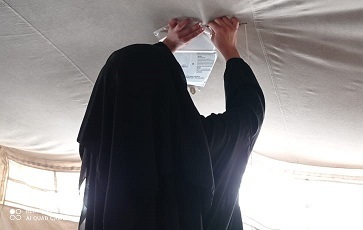About
Despite decades of investments, efforts to prevent mosquito-borne diseases have stagnated. Millions of people still suffer and die every year from preventable and treatable mosquito-borne diseases, including malaria and dengue.

- In 2017, there were around 219 million malaria cases, an increase of 3 million over 2016, and 435,000 deaths from malaria worldwide. More than 60% of these occurred in children under 5.
- Between 2015 and 2017, no significant progress in reducing global malaria cases was made. In fact, the 10 highest-burden countries in Africa reported increases in malaria cases in 2017 compared with 2016.
- Dengue is a problem for nearly 4 billion people in 128 countries. Up to 100 million infections occur annually, putting almost half the world’s population at risk. The World Health Organization identified dengue as one of 10 threats to global health in 2019.
Our current mosquito control tools--including insecticide-treated mosquito nets (ITNs) and indoor residual spraying (IRS) for malaria and space sprays for dengue--continue to play a critical role in the fight against malaria and dengue. But people are still getting sick as they need more options.
- ITNs have had a tremendous impact on malaria incidence and deaths, but the proportion of households with sufficient nets (i.e., one net for every two people) remains inadequate, at 50% in 2017.
- Between 2010 and 2017, IRS protection declined from a peak of 5.8% to 3%. In Africa, coverage dropped from 80 million people at risk in 2010 to 64 million in 2017.
- Dengue control has focused on eliminating mosquito breeding grounds and outdoor and limited indoor sprays, but the impacts vary and are generally modest. Although emergency use of indoor sprays has limited the impact of outbreaks, the economic costs are high, sometimes leading health officials to abandon campaigns after one or two cycles.
- Indoor spraying--for both malaria and dengue control--can be invasive, requiring people to vacate their homes and remove all their belongings so that spraying can take place.
Not everyone has access to existing mosquito control tools like ITNs and IRS. And in some contexts these tools are simply not practical. Displaced and refugee populations, who often live in overcrowded conditions, have poor access to healthcare and suffer from malnutrition, are particularly vulnerable to mosquito-borne diseases. And traditional mosquito control measures are often not available or easy to implement among mobile populations or those living in temporary shelters.
- More than 65 million people, including refugees and those who are internally displaced, are forcibly displaced. Many suffer from or are at increased risk for malaria and dengue.
- Refugee camps are often located on marginal lands that are breeding grounds for malaria vectors, and mosquito control programs have often broken down due to conflict
- ITNs and IRS are less practical for displaced populations as they are constantly moving and staying in makeshift shelters. Nets, even if available, may be resold for money to cover other basic needs.
Although spatial repellents were identified as a simple mosquito control approach around 75 years ago and have proven to prevent disease by deterring mosquito biting, the World Health Organization lacks the evidence it needs to make a recommendation on their public health use. In the absence of this recommendation, deployment of and funding for spatial repellents for public sector use in countries most affected by malaria and dengue remain challenging.

If we hope to one day reduce the number of malaria cases to zero and prevent outbreaks of dengue, new prevention tools must be introduced. In combination with existing methods, spatial repellents could help achieve global goals faster. Through a series of clinical trials and operational research in Kenya, Sri Lanka, Mali, and Uganda, the AEGIS team will generate further evidence about the efficacy and cost-effectiveness of spatial repellents the World Health Organization needs in order to make a recommendation regarding spatial repellents as a complementary tool for vector control. With funding from Unitaid, the University of Notre Dame is implementing this project in partnership with the Kenya Medical Research Institute, Centers for Disease Control and Prevention, Catholic Relief Services, Malaria Research and Training Center, National Dengue Control Unit within the Ministry of Health of Sri Lanka, RemediumOne, Johns Hopkins University, SC Johnson, and FHIClinical.
